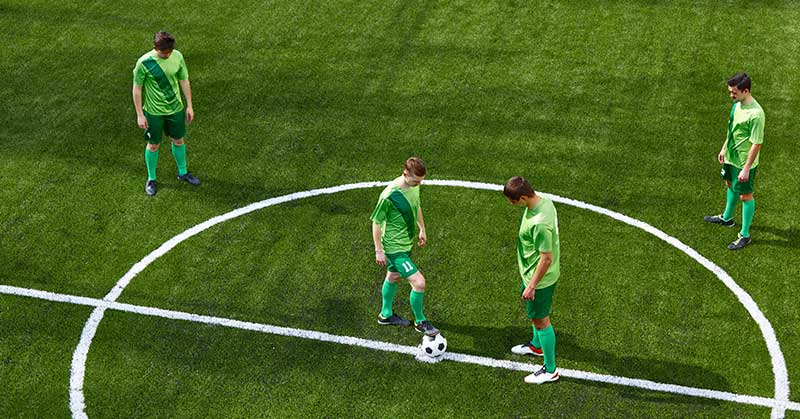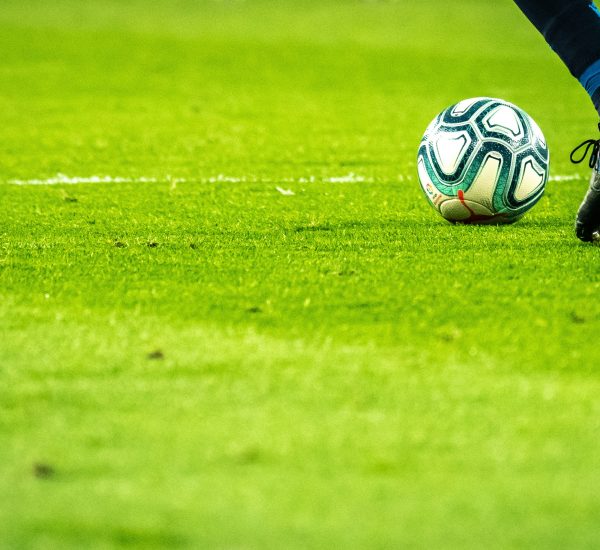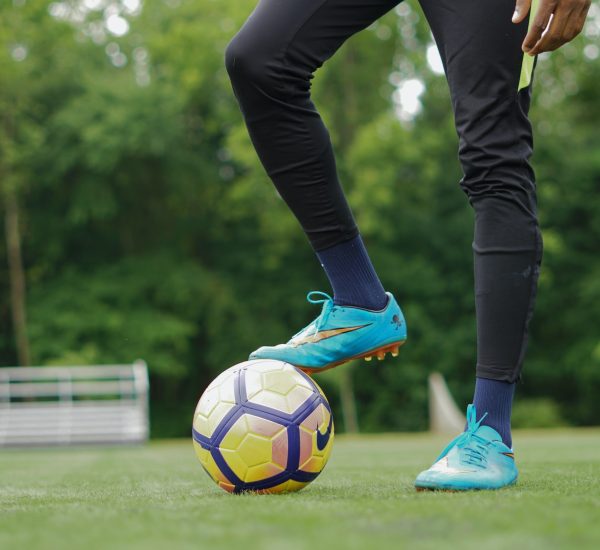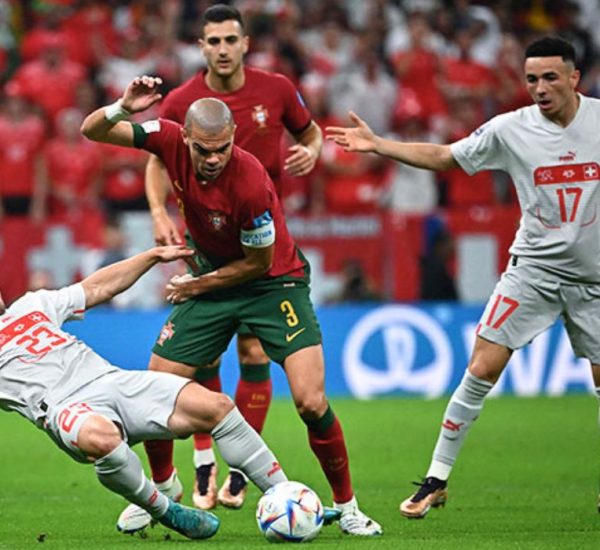Soccer is a game where two teams compete against each other. The team with the most goals is declared the winner. Each player occupies a position on the soccer field, and this article will answer all your questions about the different soccer positions that exist.
There are 11 soccer positions on a soccer field. Each soccer position corresponds to a number synonymous with the player’s jersey number. Every soccer player has specific skills that make him a leader in his position. Therefore, any team mastering all eleven soccer positions will have an advantage over its opponent.
Each soccer position on a soccer field comes with great responsibility. Consequently, this article will explore each role in detail. Besides, if you are a soccer player, reading till the end will help you spot your best soccer position.
Soccer Positions And Numbers
Soccer consists of 11 positions. Each soccer position has a name and a number assigned to it. First, let’s look at the different positions of soccer players on the soccer field and the number it represents.
- Goalkeeper
- Right-back
- Left-back
- Center-back
- Sweeper (or Libero)
- Central midfielder (more defensive)
- Right-winger (or right midfielder)
- Central attacking midfielder (more attacking or box-to-box)
- Striker (usually a target player)
- Center forward (usually a fast poacher)
- Left-winger (or left midfielder)
The soccer number associated with each position will vary from team to team and from one country to another. In addition, the number can differ based on the soccer formation adopted by each team.
It is good to know that a team does not need to line up 11 players with the numbers 1 to 11 during a soccer match.

Soccer Position Abbreviations
Each of the 11 soccer positions in soccer has an abbreviation. Below is a list of acronyms used for every soccer position.
- Goalkeeper (GK)
- Right-back (RB), Left-back (LB), Center-back (CB), Sweeper (or Libero) (SW)
- Central midfielder (CM), Right-winger (RW), Left winger (LW), Central attacking midfielder (CAM)
- Center forward (CF), Striker (ST)
Soccer Positions and What They Do
Each player on a soccer team has a specific role determined by the soccer position they occupy. Next, we’ll explore each player’s role during a soccer match.
1. Goalkeeper
The goalkeeper is responsible for stopping the opposite team from scoring goals. A goalkeeper position on the soccer field is within his penalty box. It is the only place where he can handle the ball using his hands. Still, some rules apply to this soccer position.
The goalkeeper cannot hold the ball if his teammates make a direct pass. It is to be noted that this soccer rule applies only when the ball is passed to the goalkeeper using the foot. However, if a teammate passes the ball to his keeper using his head or chest, he may grab it while inside the penalty area.
Goalkeepers can move to any part of the soccer pitch or even score goals. As a result, the soccer world has witnessed some of the best goals scored by goalkeepers in soccer history.
2. Right-back
The right-back or full-back soccer position is occupied by a player who has the task to defend the team from attacks coming from the right flank.
While full-backs defend the team all the time, there are also wing-backs. Wing-backs are defenders deployed in an attacking role to boost the attacking options. These players have extraordinary crossing abilities and are very quick.
3. Left-back
Left-backs or full-backs are a bit similar to right-backs. However, left-backs defend their teams against attacks from the player’s left side. So again, soccer players in the left-back position need to remain in the defensive position most of the time.
On the other hand, left wing-backs can move upward and attack the opposing team from the left flank. Again, they are very good at producing successful crosses that often result in goals.
4. Center back
The role of the center-back is to defend his team from attacks. It is achieved through tackles, interceptions, and blocks. During corner kicks, center-backs often move upwards as they are good at heading in goals.
This soccer position demands a lot of discipline and coordination with the line of defense.
5. Sweeper (or Libero)
The sweeper position in soccer or Libero is Italian, meaning “free.” The sweeper position is different from the other defenders because the player occupying this role can rescue his team if the opposing player passes the defense line. Therefore, they stay between the central defender and the goalkeeper.
Unlike other defensive positions in soccer, the sweeper or Libero is not engaged in man-marking. Instead, sweepers are attack-minded players who are good at counterattacking. As a result, they often carry the ball up to the midfield position.
While the idea of the sweeper moving up the midfield can benefit the team, these players should return to their defending position relatively quickly to prevent counterattacks.
6. Central midfielder (more defensive)
Often called the defensive midfielder, central midfielders play a defensive role. The player is responsible for supporting the defense against attacking threats from the opposition team.
They also provide cover by moving to the full-back or center-back when those players adopt a more attacking role. Another responsibility of the defensive midfielder is to man-mark forwards or strikers of the opposing team.
7. Right-winger (or right midfielder)
The right-winger in soccer is often referred to as the outside-right or outside-forward. The soccer position occupied by the right-winger on a soccer field is a wide position (right) near the touchline. Right-wingers have excellent attacking as well as dribbling and crossing skills. These players often set up goals by providing assists. Besides, they are good corner kick and free-kick takers.
Right-wingers playing in high pressing teams should be speedy players. Soccer is a demanding sport, which makes wingers’ tasks very challenging. Teams like Liverpool FC use their wingers to attack and defend. Examples of such wingers are Mohamed Salah and Sadio Mané.
8. Central attacking midfielder (more attacking/Box-to-Box)
The soccer position held by central attacking midfielders in soccer is in the middle third of the soccer field. The central attacking midfielder acts as a link between the forward line and the midfield. This soccer position also requires the player to initiate attacks and defend the team against the opposition team’s counterattacks.
The position of the central attacking midfielder in soccer is often referred to as the playmaker. Some of the best playmakers in soccer history are Lionel Messi, Andrés Iniesta, Xavi, Luka Modrić, and Kevin De Bruyne. These are just a few names, but the list goes on.
9. Striker (usually a target player)
A striker (aka target player) is the soccer player who leads the team’s attack. The soccer striker’s performance is measured based on the number of goals he scores for his club. However, it is to be noted that this metric alone does not define a striker’s overall achievements for his team.
Earlier in soccer, strikers used to be tall and big players. It benefited them from winning the ball quickly from corners and crosses. Today, we have strikers of different heights, showing that the theory is wrong.
10. Center forward (usually a fast poacher)
The player playing behind the striker occupies the center forward position in soccer. Therefore, the center forward must support the striker by providing him with opportunities to score goals. Another name for the center forward is the inside-left or inside-right.
Quite recently, center forwards in soccer are referred to as the second striker. These players are not that tall and physically strong. But, on the other hand, they are rapid players who have dribbling skills.
11. Left-winger (or left midfielder)
The left-winger, also known as the outside-left or outside-forward, occupies a wide position (left) near the touchline. Their roles are very much similar to the right-winger. They are fast players who master the art of crossing and scoring goals.
Playing Styles of Each Soccer Player
Each position on the soccer field requires players with specific capabilities. Next, we will look into how each player contributes to the proper functioning of the soccer team.
Goalkeeper
There are two types of goalkeepers in soccer. The first is a shot-stopper, while the second is a sweeper goalkeeper. It is to be noted that these are just abilities that certain goalkeepers have. Some goalkeepers are both very good shot-stoppers and sweeper-goalkeeper.
Shot-stopper: Shot-stoppers are very good at making saves in soccer. Their reaction time is swift, giving them the ability to stop shots from the opposing team. In addition, these goalkeepers know where to position themselves and often perform saves that look impossible.
Sweeper-goalkeepers: Sweeper-goalkeepers are keepers who are very good at reading games. They are also speedy to intercept and break an attack from the opposing soccer team. In addition, sweeper-goalkeepers are confident with playing the ball with their feet.
Defenders
There are three types of defensive playing styles in soccer, and we will look into each of them.
Attacking full-back: Attacking full-backs are soccer players (defenders) positioned on the flanks. Also known as wing-backs, these players are fast and have good crossing skills. Soccer managers often deploy their wing-backs in a more attacking role when they field three center-backs.
Sweeper or Libero: The sweeper in soccer (or Libero) is a skilled player whose position is relatively fluid compared to the other defenders. Libero acts as a last line of defense between the defender and the goalkeeper. Sweepers often launch attacks by moving forward with the ball.
Stopper: The position held by stoppers on the soccer field is the center-back. These soccer players have strength, defensive and man-marking skills. Stoppers often break the opponent’s attacks by launching a tackle. These tackles often result in fouls, leading to a booking of the defender.
Midfielders
Next, we will look at the playing style of each soccer player who occupies the midfield position.
Ball winner: Ball winners in soccer are either defensive midfielders or central midfielders. Like the name says, ball winners are soccer players who are good at retrieving balls from the opposition team. It is achieved through tackles or during one-on-one confrontations between players of both soccer clubs.
Defensive midfielder: The defensive midfielder provides support to the midfield position and the defenders. They are strong players who are good at interception and tackling. Besides, defensive midfielders in soccer are good at ball distribution.
Creative midfielder: Creative midfielders in soccer are best known for their ability to create chances out of nowhere and penetrate the opposition team’s defensive line or set up goal opportunities for the strikers. In addition, these soccer players are attack-minded and usually position themselves behind the second striker.
Box-to-box midfielder: Box-to-box midfielder in soccer is one of the most demanding positions. It requires lots of stamina as the player constantly moves to different parts of the soccer field, assisting in attacks or defending. In addition, these soccer players have some excellent passing skills.
Wide midfielder or wide playmaker: Wide midfielders or wide playmakers are fast midfielders who occupy the soccer pitch’s right or left flanks. When their team attacks, they move up and often perform crosses into the penalty box. They create goal opportunities for strikers.
Playmaker: A playmaker is a midfielder who will launch an attacking move most of the time. Besides, his creativity gives him the ability to unlock defensive lines. In addition, these soccer players are visionary and excellent game readers.
Midfield general: The midfield general or simply the central midfielder is the player who will dictate the moves of his players. He is a leader, and this attribute sometimes earns him the captain’s armband. In addition, the central midfielder will break up the opposition attack. As a result, their influence in the game is often reflected in the team’s performance.
Attackers
The playing style of soccer players occupying the attacking position varies. So let’s have a look at each of them.
Dribbler: Dribblers are skillful players who are very good at keeping the ball to their feet while performing trickery moves. Moreover, they master the art of performing a sudden change in direction that allows them to beat defenders easily. Wingers, attacking midfielders, secondary strikers, and forwards are soccer players who are good dribblers.
Counterattacker: Counterattacking occurs when the opposition team loses possession from an attacking play. On the other hand, counterattackers use their attacking ability to create goal-scoring chances. These players have great shooting accuracy in goalscoring opportunities.
Clinical finisher: Clinical finishers in soccer refer to attackers who are very good at scoring goals. These soccer players need very few chances and have a high conversion rate. In addition, they know exactly where to place the ball to beat the goalkeeper.
Target man: Target men in soccer are forwards who are tall players. They are good at controlling the ball in the air and holding them until they receive the support of their teammates. By so doing, they create attacking opportunities for their team. Therefore, the role of the target man is more adapted to the center forwards.
Goal poacher: Goal poachers refer to center forwards or second strikers. They spend most of their time in the penalty or the six-yard area, waiting for goal-scoring chances. Their ability to net in goals under challenging circumstances gave them the nickname “goal poachers.”
False nine: In soccer, a false nine is a player who seems to be playing as a center-forward but picks a more forward position in the midfield. The player pulls defenders to create goalscoring space for the forwards.
Soccer Formations
The soccer formation adopted by a team is basically how the players line up during the game. The position that each player occupies will determine the formation of the club. Many soccer formations exist, but we will look at only a few.
Soccer teams will adopt a soccer formation based on the players available for the game. Besides, the formation of a team gives an overview of how they will approach the soccer game.
We will look at the different formations soccer teams practice in modern soccer. We will consider both defensive and offensive formations.
Defensive soccer formations
4-4-2 formation: In the 4-4-2 formation, the midfielders must assist both defenders and forwards. The two players on both sides of the soccer pitch will support the forwards during attacks and cover the full-backs during counterattacks.
About the two central midfielders in the 4-4-2 soccer formation, one will move forward during the game to back attackers, and the other will provide additional cover to the defenders.
The 4-4-2 formation is adopted by teams that play against elite soccer sides—their midfield line and the defense act as two banks of four. This soccer formation should not be confused with the 4-4-2 diamond formation (4-1-2-1-2).
4-4-2 diamond or 4-1-2-1-2 formation: The soccer 4-4-2 diamond formation (or 4-1-2-1-2) is more of a defensive lineup where the defensive midfielder has to cover the back four. Besides, the full-backs have to support the attackers constantly.
During counterattacks, all four midfielders have to provide cover to the defense. As for both strikers upfront, they should be ready to counterattack opposition teams constantly.
4-5-1 formation: Although the 4-5-1 formation is more of a defensive lineup, the movement of the two wingers up the flanks will make it mimic the 4-3-3 formation, which is an attacking formation.
The 4-5-1 soccer formation is often adopted by teams looking for a draw. Moreover, few soccer clubs switch to this formation to preserve their leads during soccer games. This formation makes it difficult for the opposition team to create goalscoring chances.
Attacking soccer formations
3-4-2-1 formation: The 3-4-2-1 formation is a variation of the 3-6-1 formation that soccer teams nowadays no longer use. Instead, this formation is adopted by a team that likes to play small passes.
Very few soccer managers use this formation for their teams: three defenders, four midfielders, two attacking midfielders, and one forward. The two midfielders on the flanks are the players who have to run the most as they assist both in attacks and defense.
4-2-1-3 formation: The 4-2-1-3 soccer formation is an attacking formation where the team plays with three forwards. The 4-2-1-3 formation comes with four defenders, two defensive midfielders, one attacking midfielder, and three forwards.
The idea while using this formation is to dominate the opposition team everywhere on the soccer pitch. But, the players have to manage their stamina well to play for the whole 90 mins and not exhaust themselves during the game.
3-4-3 formation: The 3-4-3 formation is more of an attacking lineup. In this soccer formation, the four midfielders constantly have to attack and defend whenever required.
The back three are vulnerable to conceding goals and should expect support from the midfield line. Rafael Benítez adopted this lineup during the second half of the 2005 UEFA Champions League final.
Soccer Skills for each Soccer Position
Each soccer position requires players with specific soccer skills to deliver the best performance during competitive soccer games. It is achieved through coordination, understanding, and teamwork.
Let’s look at the different soccer skills needed by each soccer player for each position.
Goalkeeper
The goalkeeper is the last line of defense and requires specific skills to safeguard the team’s goal. Below is a list of soccer skills that will make any goalkeeper the perfect No. 1 choice for their team.
- Disciplined and a good leader (position and command the defense during the soccer match and opposition attacks)
- Protect the goal by performing saves
- A good reader of the game by intercepting the opponent moves
- Good reflexes to save instant and difficult shots from players
- Confident at playing the ball with his feet
- Good ball distribution skills
- Excellent reaction during one on one situations
Right-back or Left-back
Right and left defenders usually defend and attack the flanks. Moreover, they sometimes switch positions as a soccer tactic to penetrate the opponent’s penalty box. The skills that make an excellent right-back or left-back in soccer are:
- Fast players with incredible stamina so they can move forward during attacks and defend during a counterattack
- Good tackling skills
- Aggressive on the ball
- Perfect crossing and corner taking skills
- Great passing ability
Center-back
The center-back position is one of the most crucial roles in soccer. Any good center-back in soccer will possess these skill sets:
- Aggressivity when performing tackles
- Ability to shield the ball and block shots
- Disciplined and good positioning
- Good header and tackling skills
- A good leader to order and lineup the defense
- A physically strong player with excellent aerial skills
Sweeper
The sweeper is another player who plays in the defense. Unlike the center-back, the sweeper is positioned behind the defensive line. The qualities and skills of a sweeper somehow differ a little from center-backs.
- A good reader of the game
- Excellent positioning skills on the soccer field
- Superb technical and dribbling skills
- A fast player with a remarkable ability to move forward with the ball
- Good communication with his teammates
- Fine tackling skills and defensive competences
Central defensive midfielder
Defensive midfielders help the defense by supporting them during counterattacks. The qualities required to be an excellent defensive midfielder are:
- Defensive and tacking skills
- Use of body strength to fight players
- Good coordination and communication with teammates
- Good reading and vision of the game
- Fighting spirit
- Leadership skills
Attacking midfielder
The attacking midfielder will play a more advanced attacking role than the defending midfielder. To perform well in this position, the skill set needed is:
- Good reading and vision of the game
- Remarkable ball control skills
- Excellent passing and dribbling skills
- A fast player with great stamina
- Great first touch and even better accuracy with the delivery of balls
- Creativity to unlock the defense
- Defending ability is a plus
Left and right midfielder or winger
The left and right midfielder occupy both flanks on the soccer pitch. The skills needed to perform as a left or right midfielder are:
- Fast players with an excellent stamina
- Great ball crossing skills
- A good reader of the game
- They can play on both flanks if needed
- Superb dribbling skills
- Quick to defend the team
Striker
The striker is responsible for scoring goals for his team, and the skills needed to be a good one are:
- A confident player in front of goal
- Good shooting skills
- Comfortable using his head to score goals
- Dribbling skills
- Fast player
- At ease controlling the ball
Center Forward
The striker plays behind the striker and has a crucial role in every soccer team. The skills that make a great center forward are:
- A good dribbler, passer, and shooter
- A quick player who can beat off defenders
- Good vision of the game
- Know when to make a pass
No matter your position on the soccer pitch, there are specific skills that every player must possess. Implementing those skills will benefit the whole team. Every soccer player should be a team player, disciplined, have good stamina, defend together, have excellent ball control and passing ability.
Best Soccer Position for me
To love playing soccer, every player should know what soccer position is best for them. But how would you know what position in soccer is best for you?
Don’t fret! The following section will help you know which position is made for you. The information that we cover is crucial for every soccer player struggling to find their best position on the soccer field.
Which role in soccer suits you best?
While playing soccer, what are the things that you like the most? Having an answer to this question will help you better understand what position is best for you.
For example, if you like to score goals, you’re mostly going to love life as a striker or center forward. On the other hand, if you prefer to defend your team against attacks, playing as a central defender or defensive midfielder is your best bet.
The same applies to the other positions on a soccer field. If you love to save penalty kicks and command from behind, the goalkeeping position is made for you.
Try to figure out a few things you love to do while on the soccer pitch; you will eventually find your best position.
Know your Strength and Weaknesses
To make things easier, knowing your strength and weaknesses will further help you find your best soccer position. If you have stamina and run very fast, playing as a winger can help you excel in that position.
On the contrary, you will not be a great defender if you find it challenging to tackle a player.
Although loving a soccer position can be of particular benefit, you may fail to perform well as a player while occupying that role. Therefore, it is paramount that you have the skills and attributes needed for each position.
End of Line
Understanding the soccer positions is undoubtedly a must for every soccer fan or player. It allows one to understand the game better and deliver superior performances while on the soccer field.
Besides, mastering the skill sets associated with each position will up anyone’s game level.



